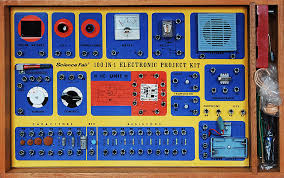In the modern world of automation, robotics, and electric vehicles, bldc motors (Brushless Direct Current motors) have emerged as a vital innovation in motion control technology. Known for their efficiency, reliability, and durability, these motors are rapidly replacing traditional brushed motors in various applications. From drones and electric bikes to industrial machines and HVAC systems, BLDC motors provide precise control, high torque, and energy-efficient performance, making them a top choice for engineers and manufacturers alike.
Unlike traditional brushed motors, BLDC motors operate without physical brushes. Instead, they use electronic controllers to manage the switching of current in the motor windings, creating smooth and silent rotation. This brushless design reduces friction and wear, resulting in a longer lifespan and minimal maintenance. The absence of brushes also improves efficiency, making these motors ideal for battery-powered applications where energy conservation is crucial.
BLDC motors are available in two main types—inner rotor and outer rotor designs. Inner rotor motors are compact and deliver higher torque at high speeds, commonly used in electric vehicles and power tools. Outer rotor motors, on the other hand, are preferred in applications like drones and fans, where stability and smooth operation are required. Their versatility and performance have made them a key component in modern engineering and automation projects.
When considering their growing demand, it’s important to understand what affects the bldc motor price in the market. Several factors determine the cost, including size, power rating, speed, torque, and application type. For instance, small BLDC motors used in electronic gadgets or cooling fans are relatively inexpensive, while high-power industrial or automotive-grade motors are more costly due to advanced materials, precision engineering, and specialized controllers.
Another major factor influencing the BLDC motor price is the inclusion of control electronics. Since these motors require an electronic speed controller (ESC) for operation, the total cost can vary depending on whether the controller is included or purchased separately. Additionally, motors with advanced features like regenerative braking, high torque density, or waterproof designs may also come at a higher price point.
In India, the BLDC motor price typically ranges from a few hundred rupees for small-scale models to several thousand rupees for industrial and automotive-grade versions. While the initial investment may seem high, the long-term benefits—such as energy savings, low maintenance, and high performance—make BLDC motors a cost-effective choice in the long run.
The growing focus on sustainability and green energy has further boosted the demand for BLDC motors in electric vehicles, solar-powered systems, and automation industries. Their ability to deliver superior efficiency while minimizing energy losses aligns perfectly with global trends toward energy conservation and environmental protection.

